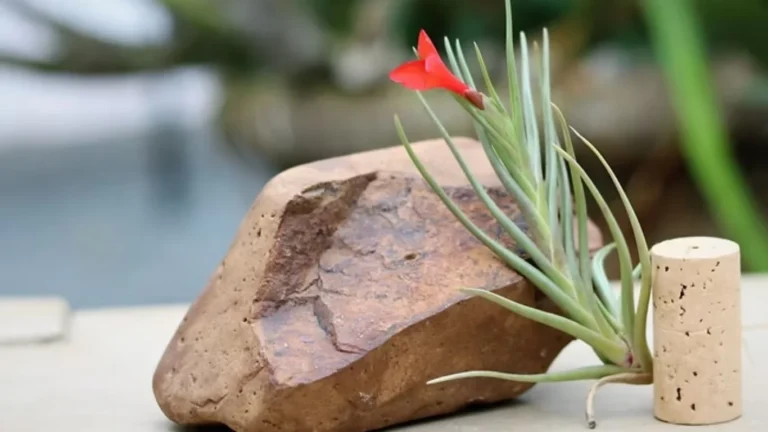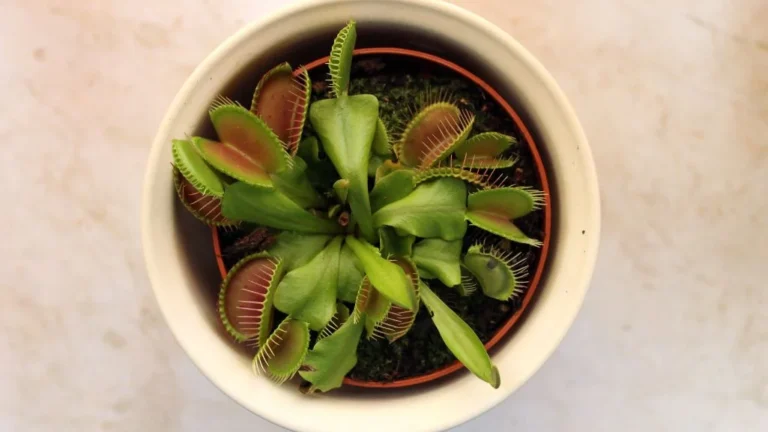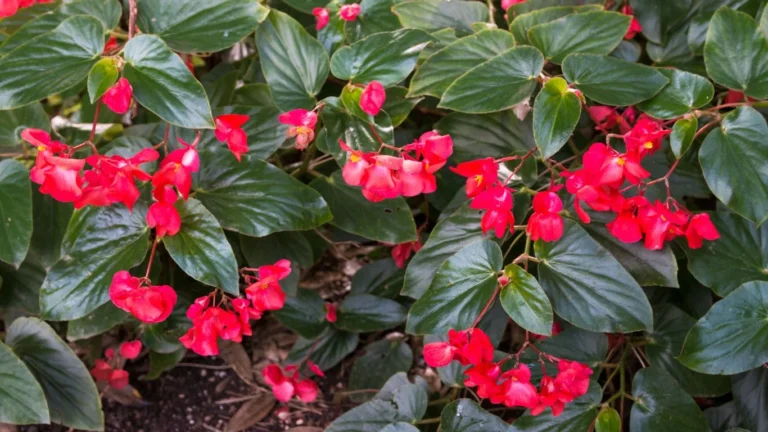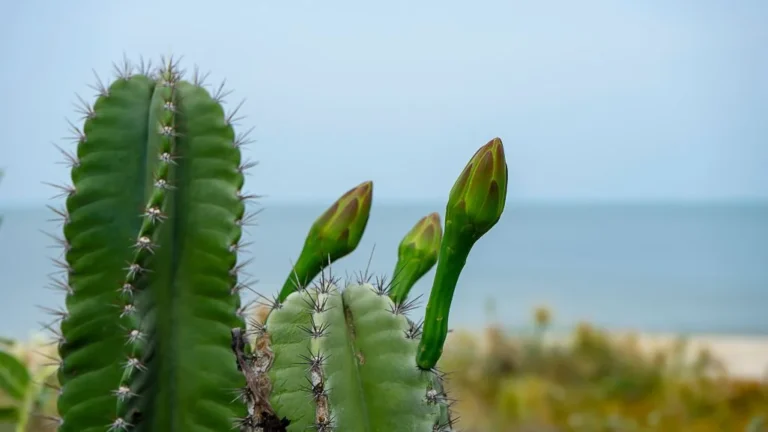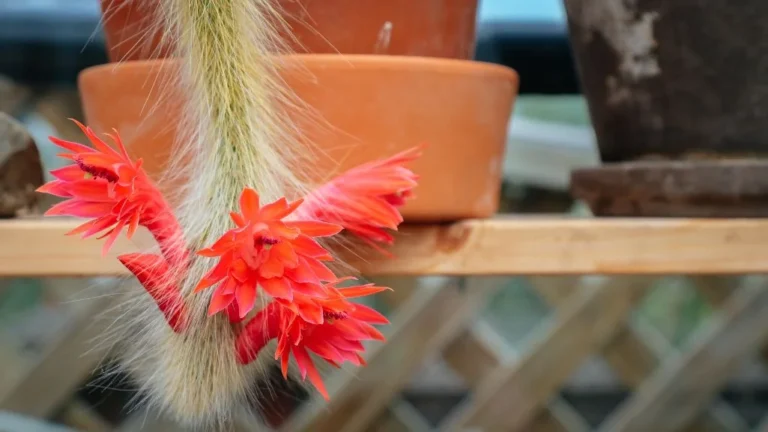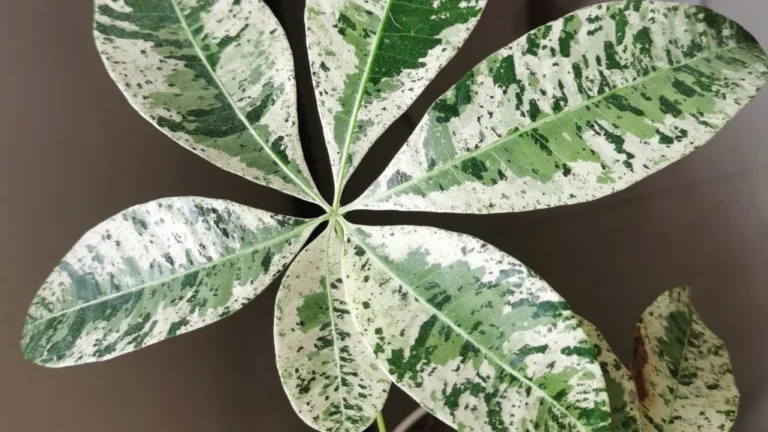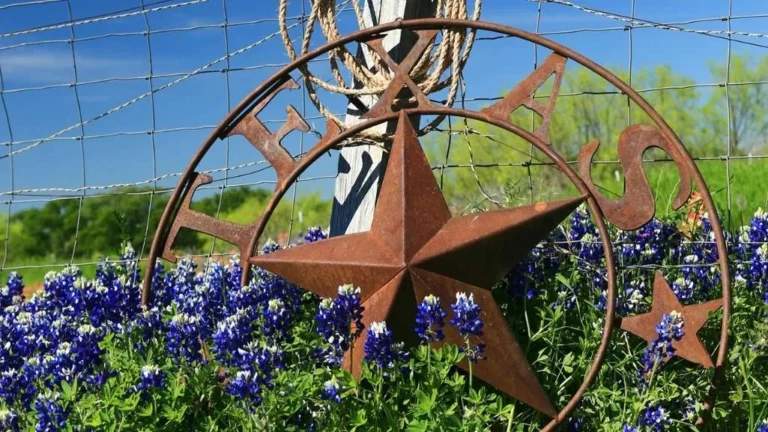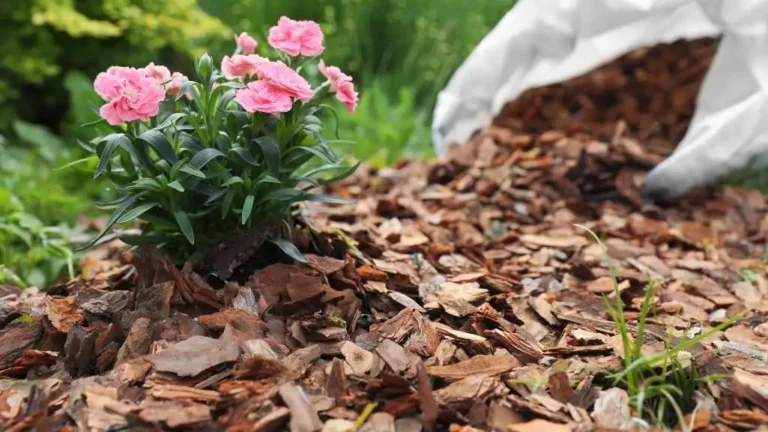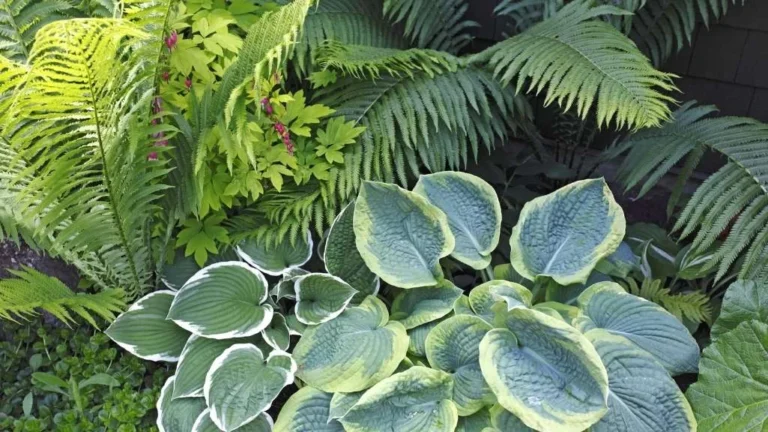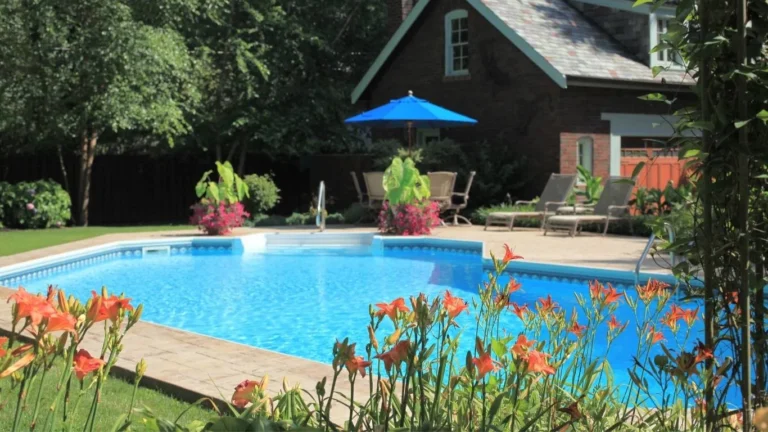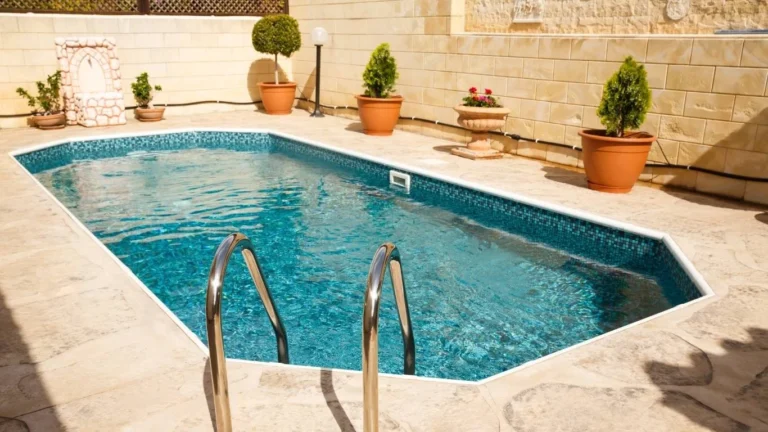Have you ever walked through a garden in the middle of summer and marveled at how some plants stay vibrant and full of life, without daily watering? That’s the magic of drought-tolerant plants, and let me tell you, they’ve completely transformed how I garden.

What Are Drought-Tolerant Plants?
Drought-tolerant plants are nature’s little warriors. These are plants that can thrive with minimal water once they’re established. They’ve adapted to survive in dry conditions by storing water in their leaves, growing deep root systems, or simply needing far less hydration than the average plant.
In my own garden, I used to struggle with keeping plants alive during long dry spells. But once I discovered drought-tolerant varieties, everything changed.
Why Drought-Tolerant Plants Are Becoming Essential
Climate change is real, and it’s affecting how we care for our gardens. Unpredictable rain, longer dry seasons, and water restrictions have made it harder to keep traditional, water-hungry plants alive. That’s where drought-tolerant plants step in.
Here’s why they’re more than just a trend:
- Climate-resilient: They withstand heatwaves and water shortages like pros.
- Water-saving: Ideal for regions facing water bans or droughts.
- Low-maintenance: Less watering, fewer worries.
- Eco-friendly: Great for sustainable gardening practices.
Switching to these plants not only saves water but also reduces the overall workload, especially helpful for busy folks like me who don’t have time to water every day.
What Makes a Plant Drought- Tolerant?
When I first heard the term drought-tolerant, I imagined desert plants like cacti and succulents. But there’s so much more behind how these plants survive. It turns out, that drought tolerance isn’t just about where a plant grows—it’s about how it’s built. Let’s break it down.
🌱 The Secret Weapons: Physiological Traits
Drought-tolerant plants have some amazing natural features that help them hold onto water and survive long dry periods:
Deep Root Systems
Many of these plants grow roots that dig deep into the soil, searching for hidden moisture far below the surface. I’ve noticed this especially in my lavender—no matter how dry the topsoil is, it still stays lush because those roots are doing the hard work underground.
Waxy or Hairy Leaves
Some plants have a waxy coating or tiny hairs on their leaves. These help reduce water loss by slowing down evaporation.
Reduced Leaf Size or Needle-Like Leaves
Smaller leaves or needle-shaped foliage means less surface area for water to escape from. That’s why plants like rosemary and sage don’t need constant watering—they’re naturally designed to conserve every drop.
🌵 Adaptations to Arid Environments
Plants that grow in dry, hot regions have evolved smart ways to deal with harsh conditions. These include:
- Crassulacean Acid Metabolism (CAM) – A fancy term for a process where some succulents open their pores only at night to reduce water loss during the hot daytime.
- Leaf Folding or Shedding – Some plants fold their leaves or even drop them during extreme drought, focusing their energy on survival instead of growth.
- Swollen Stems or Leaves – Plants like aloe or echeveria store water in their leaves or stems, almost like built-in reservoirs.
These adaptations might not be visible at first glance, but they make a huge difference when you’re gardening in tough conditions
🌎 Native vs. Non-Native Drought Tolerant Species
One thing I’ve learned through trial and error is that native plants often have a big advantage when it comes to drought tolerance. Why? Because they’ve spent centuries adapting to the local climate, soil, and rainfall patterns.
For example, if you’re in California, native options like California poppies and manzanita are natural choices. In the southern hemisphere where I live, native grasses and grevilleas are both stunning and strong.
But that doesn’t mean non-native drought-tolerant plants don’t work. Many Mediterranean herbs like thyme, oregano, and lavender are excellent in dry gardens around the world. The trick is to choose plants that match your local conditions and require minimal intervention.
Why I Switched: The Top Benefits of Growing Drought-Tolerant Plants
When I first started gardening, I thought the more I watered, the better my plants would grow. Not only was I overwatering, but I was also draining time, energy, and money. Once I discovered the world of drought-tolerant plants, everything changed.
Here’s why these plants are a total game-changer:
💧 1. Water Conservation: Less Water, More Green
Let’s start with the most obvious (and important) benefit; saving water. With climate change and growing water restrictions, every drop counts.
Drought-tolerant plants are built to survive with minimal watering, making them perfect for dry spells, water bans, or lazy weekends when you just can’t deal with the hose. I was amazed at how long my lavender and rosemary thrived between watering, even in peak summer.
🧹 2. Lower Maintenance: A Dream for Busy Gardeners
Drought-tolerant plants are incredibly low-maintenance once they’re established. No daily watering, less frequent pruning, and fewer pest problems.
Plants like sedum, coneflower, and hens and chicks practically take care of themselves. You plant them once, and they just grow.
💸 3. Long-Term Cost Savings
Here’s something I didn’t think about at first—how much money I’d save over time. Sure, you might spend a little more up front on quality drought-tolerant plants, but you’ll spend way less on:
- Watering costs
- Replacement plants
- Fertilizers and soil amendments
☀️ 4. Resilience in Hot, Dry Climates
If you live in a hot or dry region, you already know the struggle of keeping plants alive during heatwaves. That’s where drought-tolerant plants shine.
They’re built to endure extreme heat, intense sunlight, and poor soil. Even during the driest month in my area, my blanket flowers and lantanas stayed cheerful and colorful.
🌍 5. Eco-Friendly Landscaping
Switching to drought-tolerant landscaping isn’t just good for your garden; it’s good for the planet too. These plants often need:
- Fewer chemical fertilizers
- Little to no pesticides
- Minimal mowing (if you use ground covers or native grasses)
This means less pollution, less waste, and a healthier ecosystem overall. Plus, many drought-tolerant plants attract pollinators like bees, butterflies, and hummingbirds, adding even more life to your yard
Different Types of Drought-Tolerant Plants
Whether your garden basks in full sun or sits in a shady corner, there’s a drought-tolerant plant for every space. Some love the heat and sunshine, while others are surprisingly good at surviving in shaded areas with limited moisture. Yes, shade and drought- tolerant plants do exist, and I’ll be sharing my top picks for those too.
How to Choose the Right Drought-Tolerant Plants for Your Garden
When I first dipped my toes into water-wise gardening, I made a classic beginner mistake. I chose plants just because they were labeled “drought-tolerant.” But some of them struggled or even died. That’s when I learned that picking the right drought-tolerant plants for your space involves more than just grabbing whatever looks good at the nursery.
Here’s how I now confidently choose plants that thrive in my garden, even during the hottest months.
🌎 Know Your Climate Zone
Your climate zone (like USDA or RHS hardiness zones) plays a big role in how well a plant performs. A drought-tolerant plant that thrives in Arizona may not survive a coastal climate with humidity, and vice versa.
🔍 Tip
Search for drought-tolerant plants native to your region, they’ve already adapted to your rainfall patterns, temperatures, and seasons. For example, I live in a warm region with dry summers, so Mediterranean plants like lavender, sage, and rosemary are always top performers.
If you’re unsure which native plants thrive in your area, I highly recommend checking out the National Wildlife Federation’s Native Plant Finder. Just enter your ZIP code to discover drought-resistant natives that support local ecosystems and pollinators.
🌞 Understand Your Soil and Sun Conditions
Your soil type and how much sun your garden gets each day can make or break your drought-tolerant setup.
- Well-draining soil is essential. If your soil holds too much water, you might want to amend it with sand or compost.
- Sun exposure is another biggie. Some drought-tolerant plants love full sun (6–8 hours daily), while others do better in partial shade.
🌿 Use Hydrozoning: Group Plants with Similar Needs
One trick I learned from a local landscape designer is hydrozoning, a fancy term that simply means grouping plants with similar water requirements. This makes watering way more efficient and helps prevent over- or under-watering certain areas.
Here’s how I do it:
- High water needs? Near the hose or in pots.
- Medium needs? Clustered together in one garden bed.
- Low water needs (like most succulents and Mediterranean herbs)? Further from the water source, and planted in full sun.
🌳Don’t Forget About Shade and Drought Tolerant Plants
If you think drought-tolerant plants only belong in sunny rock gardens, think again! There’s a whole world of shade and drought tolerant plants that can bring life and texture to those dry, dim spots under trees, next to fences, or in narrow side yards.
Some of my favorites include:
- Heuchera (Coral Bells) – Colorful foliage that thrives in part shade
- Japanese Forest Grass – Low, graceful, and tough as nails
- Liriope (Lilyturf) – Great as a border or ground cover
- Hosta (when established) – Surprisingly tolerant of dry shade
- Epimedium – Elegant heart-shaped leaves and delicate flowers
Bottom line
The key to a thriving, water-wise garden is matching the right plant to the right place. Take a little time to understand your garden’s sun, shade, and soil—and your drought-tolerant garden will reward you for years to come.
Flowering Drought-Tolerant Plants
When I first started my drought-tolerant garden, I worried it might look boring. I imagined tough gray foliage and no flowers. But let me tell you, drought-tolerant plants can bloom just as beautifully as any thirsty flower bed.
In fact, many of these flowering champions not only survive dry conditions, they thrive in them. Here are five of my favorite blooms that add serious color without guzzling water.

Lavender (Lavandula spp.)
Lavender was one of the first drought-tolerant plants I added to my garden, and it’s still a star. It not only looks elegant but fills the air with that soothing, herbal fragrance.
It loves full sun, needs very little water once established, and attracts pollinators like bees and butterflies.
✅ Why I love it: It thrives in poor soil, requires little maintenance, and even provides flowers for homemade sachets or teas.

Coneflower (Echinacea purpurea)
If you want butterflies in your garden without spending hours watering, coneflowers are a must. These tough perennials bloom in bold shades of purple, pink, and white, sometimes even orange and red.
They’re also self-seeding, which means more plants next season for free.
✅ Why I love it: Coneflowers bloom all summer, add height and texture, and are great for wildflower-style gardens.
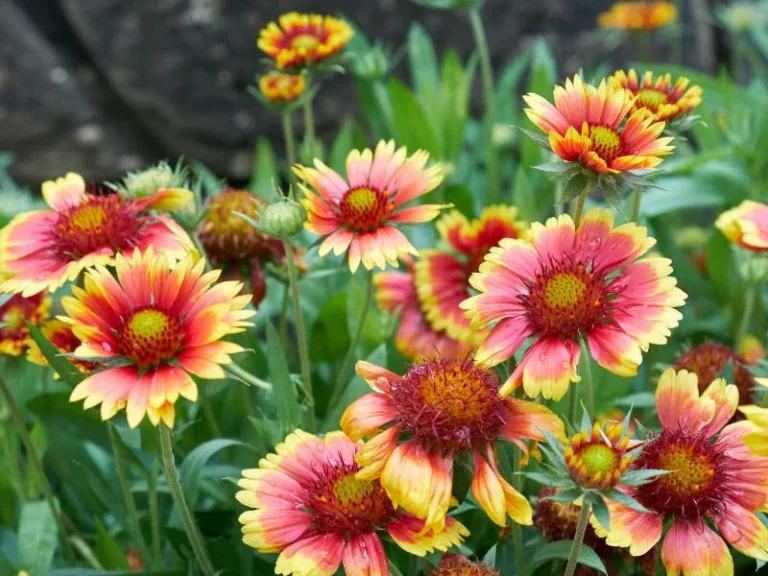
Blanket Flower (Gaillardia)
Gaillardia is like a burst of sunset in the garden, fiery reds, oranges, and yellows radiate from each bloom. These flowers are built to handle poor, sandy soils and barely blink during summer heatwaves.
Their compact size makes them perfect for borders or rock gardens.
✅ Why I love it: They’re super hardy and bloom from early summer to fall with very little fuss.
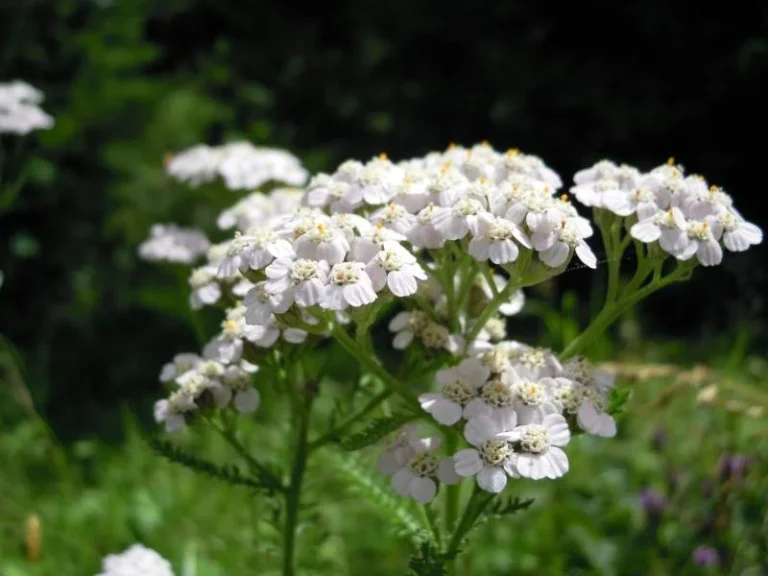
Yarrow (Achillea millefolium)
Yarrow is one of those plants that surprises you. It looks soft and feathery, with fern-like leaves and umbrella-shaped flower clusters in pink, white, yellow, and red.
It thrives in drought, tolerates poor soil, and is great for both formal and cottage-style gardens.
✅ Why I love it: It blooms forever, supports pollinators, and even works well as a dried flower.
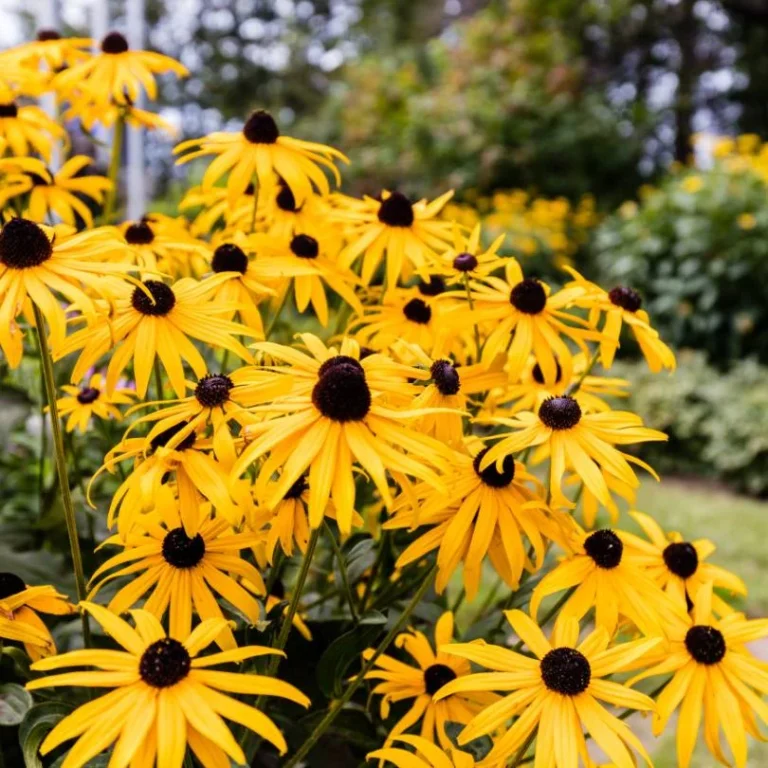
Black-Eyed Susan (Rudbeckia hirta)
Black-eyed Susans are like sunshine on a stem. These cheerful yellow flowers with dark centers are incredibly resilient, blooming from midsummer through fall.
They’re ideal for mass planting, naturalized gardens, or mixed borders.
✅ Why I love it: It’s one of the easiest plants to grow, and it brings an effortless pop of color all season long.
Drought Tolerant Shrubs
If you’ve ever looked at your garden during a dry spell and thought, “It needs more backbone,” then drought-tolerant shrubs are your answer. While flowering perennials and groundcovers bring seasonal charm, shrubs are the reliable workhorses, they anchor the landscape and stay strong, even when rain is scarce.
I’ve grown a variety of these over the years, especially during a season when water restrictions were tight. Here are my go-to picks that deliver beauty and durability in any dry garden:
Rosemary (Rosmarinus officinalis)
Rosemary isn’t just for the kitchen, it’s a drought-tolerant plant that doubles as an evergreen shrub. With its needle-like leaves and soft blue flowers, it creates lovely hedges, borders, or even potted displays. It thrives in full sun and well-draining soil, and once established, it hardly needs a drop of water.
✅ Why I love it: It smells amazing, attracts pollinators, and I can snip fresh sprigs for cooking whenever I want.

Oleander (Nerium oleander)
This Mediterranean native is one of the hardiest shrubs I’ve ever grown. Oleander produces clusters of white, pink, red, or yellow flowers all summer long and handles heat like a champ. It’s great for screening, fences, or large containers.
📌 Note: Oleander is toxic if ingested, so it’s best planted away from pets and small children.
✅ Why I love it: It thrives in scorching sun, needs minimal water, and keeps blooming without complaint.
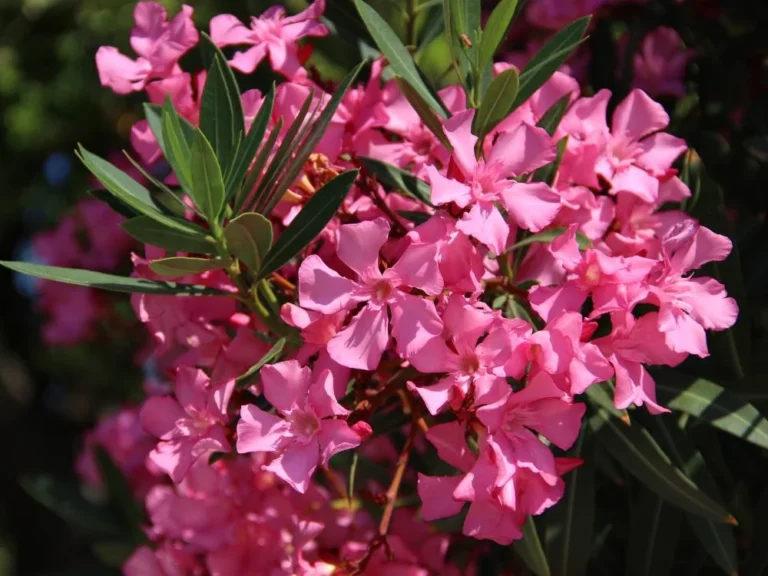
Springtime78/ Getty Images
Russian Sage (Perovskia atriplicifolia)
I always describe Russian Sage as “lavender’s wild cousin.” It has the same soft, silvery leaves and purple flowers but grows taller and wilder, with a cloud-like bloom that lasts through the hottest part of summer. It’s perfect for adding movement and texture to a dry garden.
✅ Why I love it: It attracts bees, stands up to heat, and looks magical when swaying in the breeze.
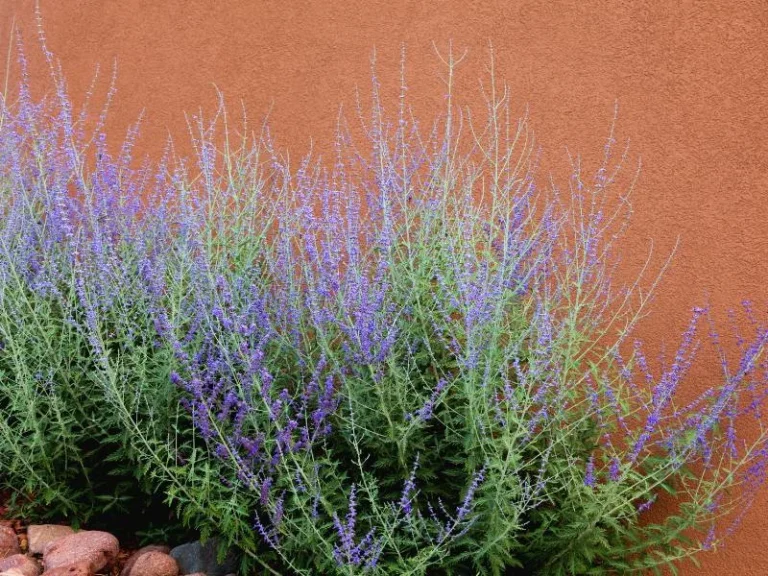
Cstar55/ Getty Images Signature
Texas Sage (Leucophyllum frutescens
If you live in a hot, arid climate, Texas Sage is a must-have. Its silvery-gray foliage reflects sunlight and conserves water, while the bright purple blooms appear almost overnight after a rain. It’s low-maintenance and deer-resistant, two big wins in my book.
✅ Why I love it: It brings a desert-chic feel to the garden, and the flowers are like a bonus after a dry spell.
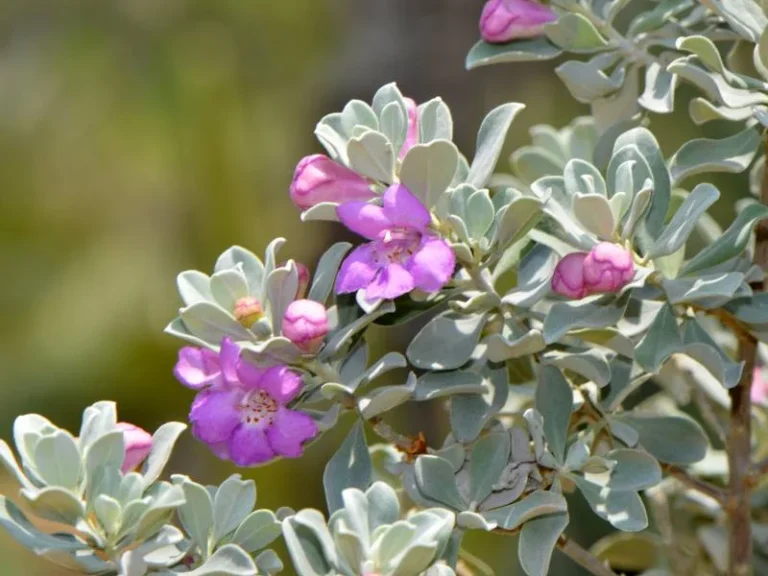
Butterfly Bush (Buddleia davidii)
Few shrubs perform as reliably as the Butterfly Bush. It produces long spikes of fragrant flowers in purple, pink, white, or blue. True to its name, it attracts butterflies like crazy.
✅ Why I love it: It blooms for months, thrives in neglected corners, and turns any space into a pollinator haven.
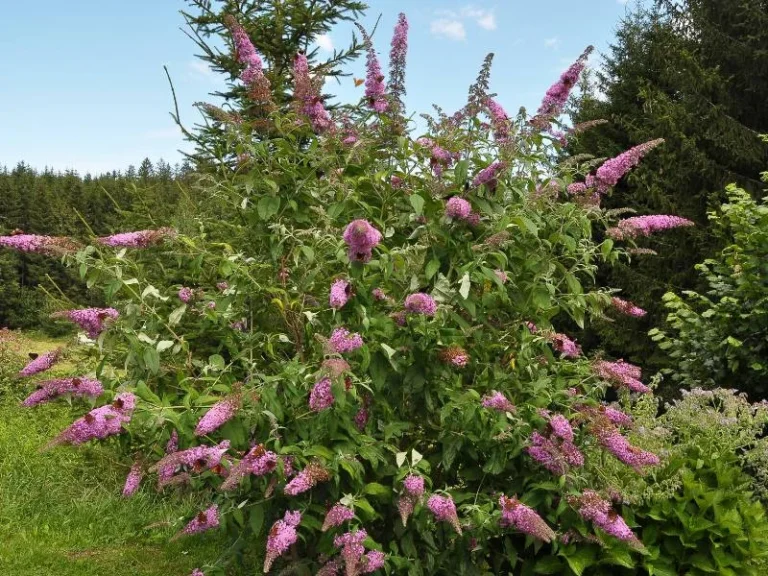
💡 Pro Tip
Layer with Purpose
In my garden, I like to mix shrubs with drought-tolerant flowering plants to create a multi-level, low-water landscape. Shrubs form the backbone, while blooms and groundcovers fill in the color and texture.
Drought Tolerant Ground Covers
When I started transitioning to a more water-wise garden, one of the biggest changes I made was swapping out thirsty lawn patches for drought-tolerant ground covers. These low-growing heroes do more than just cover bare soil. They lock in moisture, reduce weeds, and add character to every corner of your landscape.
Whether you’re filling in gaps between stepping stones or replacing turf entirely, these five ground covers are tough, beautiful, and practically take care of themselves.
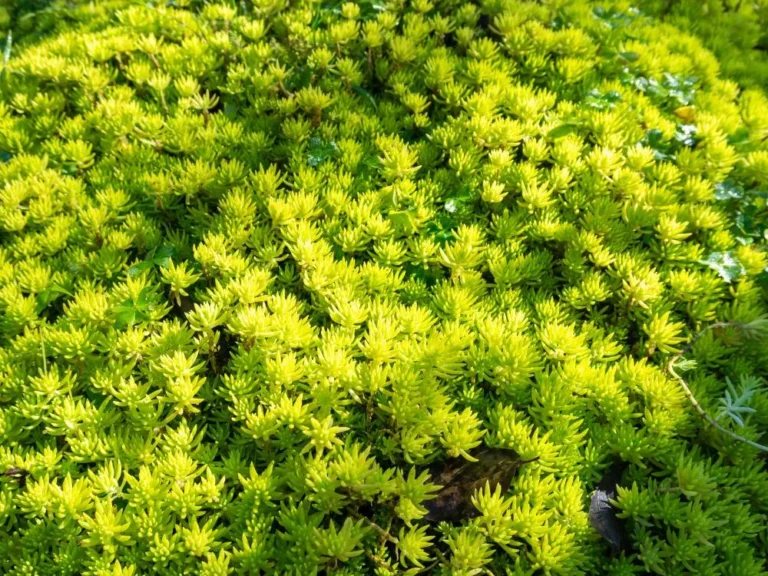
Sedum (Stonecrop)
Sedum was my first ground cover love. With its fleshy leaves, unique textures, and incredible range of colors—from deep green to coppery red—this plant thrives on neglect. It stores water in its leaves, so even during scorching summers, it holds up like a champ.
Many varieties like Sedum spurium and Sedum album stay low and spread fast, making them ideal for dry slopes, rock gardens, or between pavers.
✅ Why I love it: Sedum varieties bloom in summer, are incredibly easy to divide, and need little to no water once established.

Creeping Thyme (Thymus serpyllum)
This is one of those drought-tolerant plants that does triple duty—it’s fragrant, beautiful, and even culinary. Creeping thyme spreads quickly, forming a dense, fragrant mat that releases a sweet scent when you walk on it. Tiny purple flowers bloom in late spring, attracting bees.
It’s perfect for borders, pathways, or even a living mulch around drought-tolerant shrubs and flowers.
✅ Why I love it: You can use it in cooking, it’s pollinator-friendly, and it never gets thirsty.
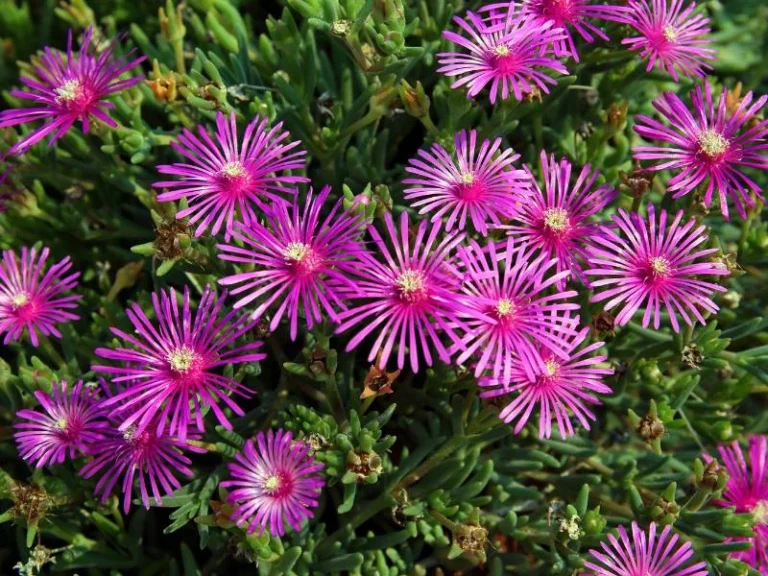
Ice Plant (Delosperma cooperi)
Ice plant is an absolute showstopper in my garden. With succulent leaves that shimmer in sunlight and neon-bright, daisy-like flowers, it adds a pop of color even during dry spells. Native to South Africa, it’s built for hot, dry climates and poor soil.
It works especially well in slopes, curb strips, and rock gardens.
✅ Why I love it: It blooms nonstop in full sun and is one of the lowest-maintenance plants I’ve ever grown.

Lamb’s Ear (Stachys byzantina)
Lamb’s Ear gets its name from the ultra-soft, fuzzy leaves that add a silvery contrast to all that green.
It’s drought-tolerant and prefers dry, well-draining soil. While it can spread aggressively in the right conditions, that’s exactly what makes it such a great ground cover.
✅ Why I love it: It’s soft to the touch, nearly pest-proof, and thrives in tough spots.
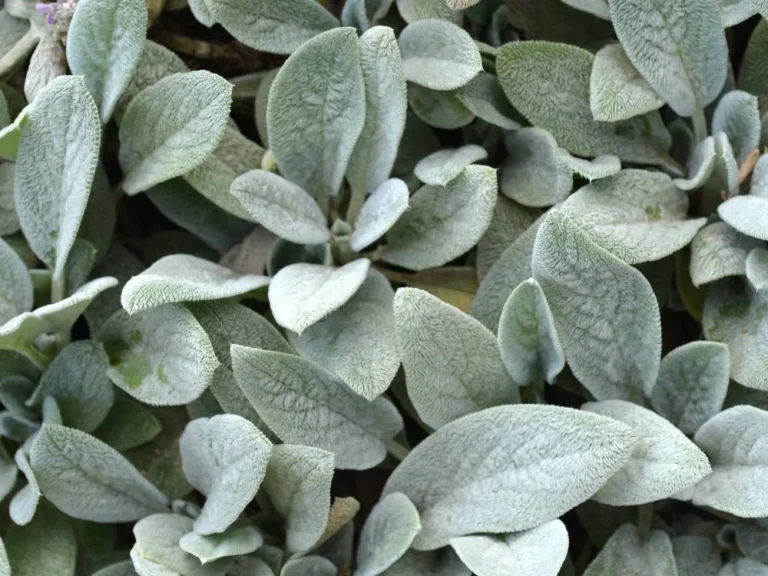
Dymondia (Dymondia margaretae)
Dymondia is a compact ground cover from South Africa that’s been a game changer in my front yard. It forms a tight mat of narrow, gray-green leaves with a silvery underside and tiny yellow flowers in summer. It’s low-growing, soft underfoot, and drought-proof.
It’s especially popular as a low-water lawn alternative in warm regions.
✅ Why I love it: It resists foot traffic, rarely needs watering, and looks polished without any mowing.
My Gardener’s Tip
If you’re serious about water-wise gardening, layer your landscape, tall shrubs in the back, flowering perennials in the middle, and these hardworking ground covers in the front. They hold moisture, cool the soil, and bring unity to your design.
Succulents and Cacti
If you ask me, succulents and cacti are the real warriors of a drought-tolerant garden. When I first switched to water-wise landscaping, these quirky plants stole my heart. They store water in their leaves and stems, making them perfect for hot, dry, and neglected corners of the garden. Plus, their textures, shapes, and colors are unmatched. It’s like having a miniature desert art installation right in your backyard.
Here are five of my absolute favorites when it comes to drought-tolerant succulents and cacti:

Agave
Agave is a statement-maker. With its thick, spiky leaves forming dramatic rosettes, it’s often the first thing people notice in my dry garden beds. It’s incredibly drought-tolerant and loves full sun. Most varieties thrive with almost no care and live for years, slowly growing larger over time.
✅ Why I love it: It’s low-maintenance but looks high-end and architectural.

Aloe Vera
This plant is both pretty and practical. Aloe Vera has thick, fleshy leaves filled with a cooling gel that’s a lifesaver for sunburns, cuts, and even dry skin. In my home, it lives both indoors and outside because it’s so versatile.
Give it bright light, and it’ll thrive with minimal watering. It’s perfect for containers, balconies, and sunny windowsills.
✅ Why I love it: It’s the ultimate mix of form and function—beautiful and medicinal.

Echeveria
Echeveria is like a tiny desert rose. These symmetrical beauties come in dusty blues, pinks, and purples, and they look amazing in shallow pots, wall planters, or tucked into rocky borders. They don’t like soggy soil, so a well-draining mix is key.
Once established, they’re ridiculously low-maintenance and look perfect year-round.
✅ Why I love it: They multiply easily and add elegant texture to small spaces.

Opuntia (Prickly Pear Cactus)
This is a classic desert plant that always sparks conversation in my garden. Opuntia, commonly known as prickly pear, grows broad, paddle-shaped pads that store water and withstand extreme drought. It also produces edible pads (nopales) and juicy, sweet fruits in vibrant pink or red.
It’s hardy, striking, and serves double duty as a food source and ornamental.
✅ Why I love it: It looks wild and rugged but is surprisingly easy to tame in a sunny spot.
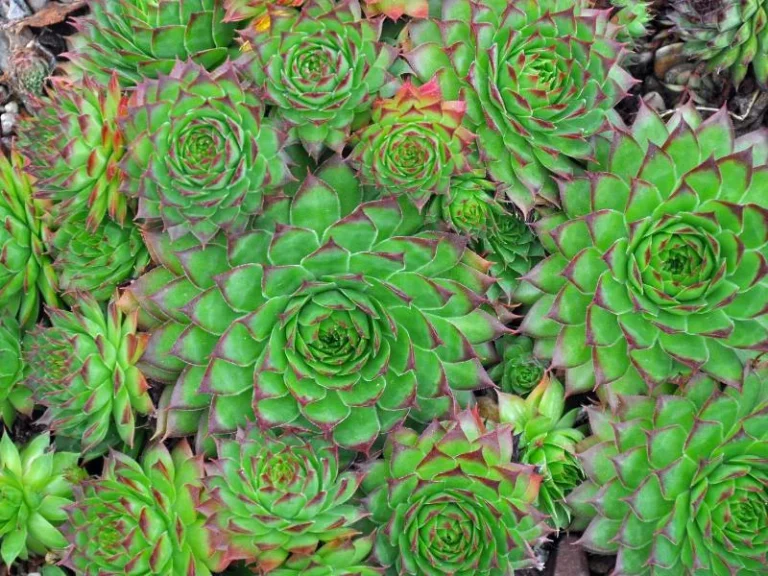
Hens and Chicks (Sempervivum)
I have a soft spot for these little rosettes. Hens and Chicks form a main “hen” plant surrounded by many baby “chicks,” which eventually grow into their own. They’re excellent for ground covers, containers, or even vertical gardens.
They’re not just drought-tolerant, they thrive in poor soil, need almost no watering, and shrug off neglect like pros.
✅ Why I love it: They’re super cute, fun to propagate, and tough as nails.
Shade and Drought Tolerant Plants
Gardening in shady and dry spots can feel like an impossible task. When I first tried to green up the dark corner under a tree in my backyard, I was this close to giving up. But then I discovered some real-life plant superheroes: shade and drought tolerant plants. These quiet warriors don’t need the spotlight (or constant watering) to thrive. They bring beauty, color, and texture even to the most neglected areas.
Here are 5 of my personal go-to favorites that truly shine in the shadows:

Heuchera (Coral Bells)
If you love foliage as much as I do, Heuchera is a dream come true. From deep burgundy and caramel to lime green and silver-speckled varieties, these plants light up shady corners with their stunning leaves.
Heucheras are incredibly drought-tolerant once established and are happy in partial to full shade. I’ve used them to brighten the north side of my garden, where the sun barely kisses the soil.
✅ Why I love it: The leaf colors are so vibrant, it’s like having flowers all year round.
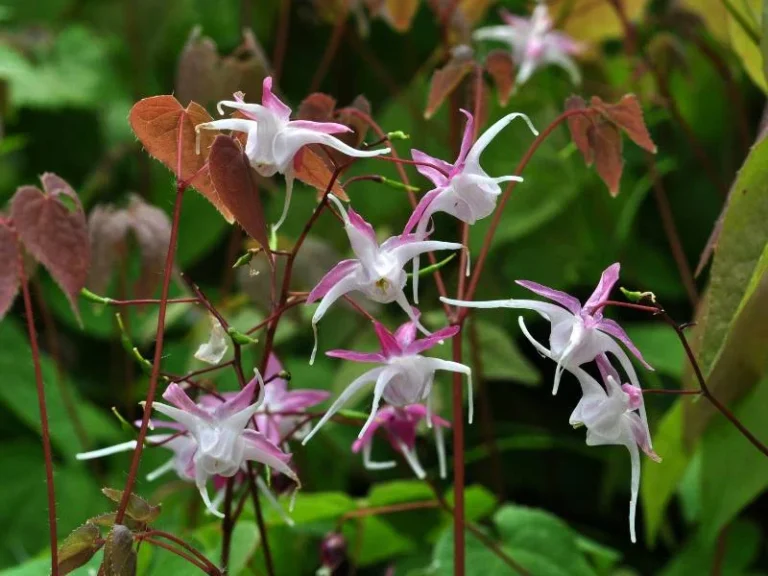
Epimedium
Also known as Bishop’s Hat or Fairy Wings, Epimediums bring a delicate, romantic feel to dry, shady spots. Their heart-shaped leaves often turn red or bronze in fall, and they bloom in early spring with intricate flowers that float like tiny butterflies.
These perennials are super low maintenance, resilient in dry shade, and ideal for under trees or along fences.
✅ Why I love it: They’re tough, but look fragile—like woodland poetry in plant form.

Japanese Forest Grass (Hakonechloa macra)
This ornamental grass adds movement and texture, making it perfect for creating a calming, Zen-like feel in your garden. It thrives in partial to full shade and handles dry spells surprisingly well once it’s settled in.
I use it to soften hard edges along pathways and under shrubs, it cascades beautifully and stays neat without any fuss.
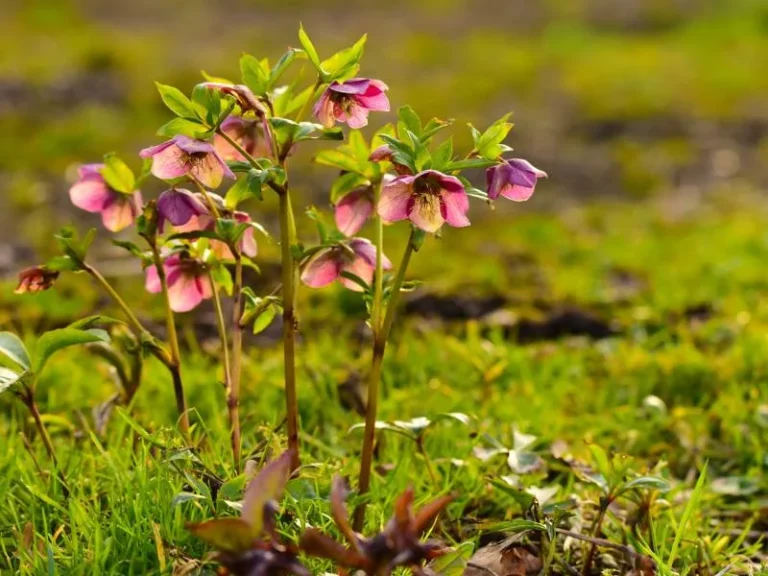
Hellebores (Lenten Rose)
Hellebores are one of the first flowers to bloom after winter, sometimes even through snow! Once they’re established, they’re impressively tolerant of dry shade. Their leathery evergreen leaves add interest even when they’re not flowering.
Mine come alive in late winter or early spring, just when the rest of the garden is sleeping—and they never fail to impress guests.
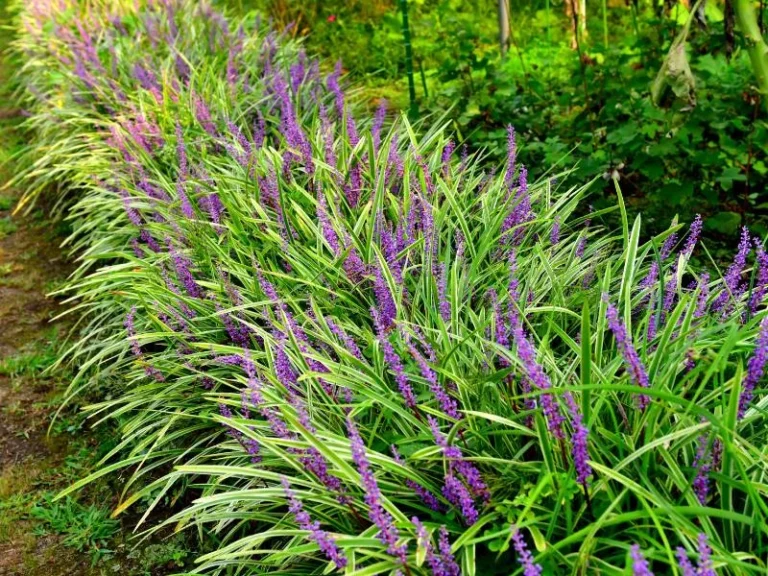
Liriope (Lilyturf)
Need a hardy, drought-resistant plant that can handle shade and foot traffic? Enter Liriope. This grassy plant grows in clumps and produces small purple flower spikes that resemble mini grape hyacinths. It’s fantastic as an edging plant, between stepping stones, or even as a lawn alternative in dry, shady areas.
Gardening in low light and dry conditions doesn’t mean sacrificing beauty. These shade and drought tolerant plants prove that with the right choices, you can create a lush, serene space that’s both eco-friendly and low-maintenance.
Designing a Drought-Tolerant Landscape
When I first decided to transform my garden into a drought-tolerant oasis, I quickly realized that smart design is just as important as the plants themselves. It’s all about working with nature, using water wisely and making every drop count. This approach is called xeriscaping, and it’s a game-changer for anyone wanting a stunning garden without the constant watering hassle.
Here are some of the basics and tips that helped me design a water-smart, drought-friendly landscape:
Xeriscaping Basics
Xeriscaping is landscaping focused on reducing or eliminating the need for supplemental watering. Instead of fighting against a dry climate, you embrace it by choosing plants that thrive on natural rainfall, improving soil health, and using materials that help conserve moisture.
The key principles I followed were:
- Selecting drought-tolerant plants (which you already know well by now!)
- Grouping plants by their water needs (hydrozoning)
- Using mulch and soil amendments to retain moisture
- Designing for efficient irrigation when watering is necessary
Using Gravel, Rocks, and Mulch
One of my favorite design tricks is layering the soil with mulch or decorative gravel. Mulch helps lock in soil moisture, prevent weeds, and protect roots from extreme heat.
Gravel and rocks aren’t just pretty, they also:
- Reduce evaporation by shading the soil
- Improve drainage to prevent root rot
- Add a natural, textured look that complements succulents and shrubs
Using Gravel, Rocks, and Mulch
One of my favorite design tricks is layering the soil with mulch or decorative gravel. Mulch helps lock in soil moisture, prevent weeds, and protect roots from extreme heat.
Gravel and rocks aren’t just pretty, they also:
- Reduce evaporation by shading the soil
- Improve drainage to prevent root rot
- Add a natural, textured look that complements succulents and shrubs
Smart Plant Placement for Sun, Shade, and Water Efficiency
This might be the single most important part of designing a drought-tolerant landscape. You want to:
- Put sun-loving plants like agave and lavender in the brightest, driest spots.
- Group shade and drought tolerant plants (like Heuchera or Liriope) in lower light areas.
- Cluster plants with similar water needs together to avoid overwatering some and underwatering others.
I personally map out my garden zones first—sunniest corners get the thirstiest drought-lovers, and shady nooks get the shade champions. This way, each plant thrives without wasting water.
Care and Maintenance Tips for Drought Tolerant Plants
Growing drought tolerant plants might sound like a “plant it and forget it” situation, but a little care at the start and smart maintenance go a long way. I’ve learned that setting your plants up right and following some simple watering and pruning habits makes all the difference between a garden that barely survives and one that truly thrives.
Here’s what works best for me and many gardeners who love drought-friendly plants:
💧 Establishing Plants with Initial Watering
Newly planted drought tolerant plants still need a bit of care. When I plant, I make sure to give them a deep, thorough watering right after planting to help their roots settle in and get comfortable.
For the first few weeks, I water regularly but sparingly; just enough to keep the soil moist but not soggy. This gentle start helps them develop strong root systems that can later seek water deep underground.
🕰️ Deep, Infrequent Watering Methods
Once established, these plants prefer deep, infrequent watering over frequent shallow watering. This encourages roots to grow deep into the soil, increasing drought resistance.
A good rule of thumb I follow is to water deeply once every 7–14 days depending on the season and rainfall. Using a drip irrigation system or a slow-soaker hose helps deliver water directly to the root zone with minimal waste.
🌿 Mulching to Retain Soil Moisture
Mulch is a gardener’s best friend when it comes to water conservation. I spread a generous layer of organic mulch—like shredded bark or compost—around my plants to:
- Keep soil temperatures stable
- Reduce evaporation and lock in moisture
- Suppress weeds that compete for water
Not only does mulch make the garden look tidy, but it saves me time and water during the hot months.
✂️ Pruning and Seasonal Care
Regular pruning keeps drought tolerant plants healthy and encourages better growth. I remove dead or damaged branches and spent flowers to keep plants neat and to prevent disease.
Some drought tolerant shrubs and perennials also benefit from light trimming after flowering. And remember, many of these plants go dormant or slow down during the hottest or coldest months, so ease up on watering and pruning during those times.
🌞 Adjust Care Based on Your Local Climate
Each garden is unique, and the best care depends on your local climate and soil. Pay attention to how your plants respond—are leaves wilting or turning brown? It might mean they need more water or shade.
Over time, you’ll become a pro at reading your garden’s “water language,” making your drought-tolerant landscape more resilient and beautiful year after year.
Common Myths About Drought Tolerant Gardening
When I first started exploring drought tolerant plants, I encountered a few widespread myths that almost held me back. Let me share what I’ve learned by busting some of the most common misconceptions around drought tolerant gardening—because knowing the truth will help you feel confident and excited about creating your own beautiful, water-wise garden.
❌ Myth 1: Drought tolerant plants never need water.
I wish this were true! But even the toughest drought tolerant plants need some water, especially when they’re young or during extended dry spells. The secret is how and when you water them—deep, infrequent watering encourages strong roots and long-term survival.
Think of drought tolerant plants as hardy but not invincible. They’re adapted to survive dry periods, not complete neglect.
❌ Myth 2: All drough- tolerant plants are succulents.
Succulents like agave and aloe vera get a lot of attention because they store water in their leaves, but drought tolerance isn’t limited to succulents alone.
In fact, many flowering plants, shrubs, ground covers, and even shade plants can be drought tolerant! For example, lavender, coneflowers, Russian sage, and coral bells all thrive in dry conditions without being succulents.
❌ Myth 3: Drought tolerant gardens look boring or desert-like.
If you imagine a drought-tolerant garden as just sand, cacti, and brown dirt, you’re missing out! These gardens can be vibrant, colorful, and full of texture.
From the fragrant purple spikes of lavender to the bright yellows of black-eyed Susans and the graceful foliage of Japanese forest grass, drought-tolerant plants offer a stunning palette that fits every style—from Mediterranean charm to lush woodland vibes.
Drought-tolerant gardening is about working with nature and celebrating the resilience and beauty of plants that flourish with less water. It’s not about sacrifice, it’s about smart choices, creativity, and sustainable beauty.
Once I let go of these myths, I found a world of possibilities that saved me water, time, and money, while making my garden a place I love.
Switching to drought tolerant plants isn’t just a smart choice, it’s a meaningful step toward a more sustainable, eco-friendly future. With growing concerns about climate change and water shortages, embracing low-water gardening helps conserve precious resources without sacrificing style or vibrancy.
The best part is you don’t have to compromise on beauty. Whether you choose sun-loving bloomers, resilient shrubs, soft ground covers, or even shade and drought tolerant plants, you can create a garden that’s both stunning and efficient.
Frequently Asked Questions (FAQs
Can I grow drought tolerant plants in pots?
Absolutely! Many drought tolerant plants do great in containers. Pots offer the flexibility to move plants around to catch the best light and protect them from extreme weather. Just make sure to use well-draining soil and containers with drainage holes to avoid waterlogging. Succulents, lavender, and even rosemary thrive beautifully in pots.
What’s the best mulch for drought resistance?
Organic mulches like shredded bark, wood chips, and straw work wonders. They help keep soil cool and retain moisture, which means less frequent watering. Inorganic mulches such as gravel or decorative stones also reduce evaporation and add a lovely finishing touch to your garden design. Choose mulch that fits your style and complements your plants.
How do I water less without stressing my plants?
Switching to deep, infrequent watering is key. Water slowly and deeply to encourage roots to grow downward, reaching moisture far below the surface. Using drip irrigation or soaker hoses can help deliver water efficiently. Also, grouping plants by similar water needs (hydrozoning) prevents overwatering some while underwatering others.
What are the best shade and drought-tolerant plants?
Not all drought tolerant plants crave full sun. Some thrive in dry, shady spots too. My favorites include:
- Heuchera (Coral Bells)
- Epimedium
- Japanese Forest Grass (Hakonechloa macra)
- Hellebores (Lenten Rose)
- Liriope (Lilyturf)



